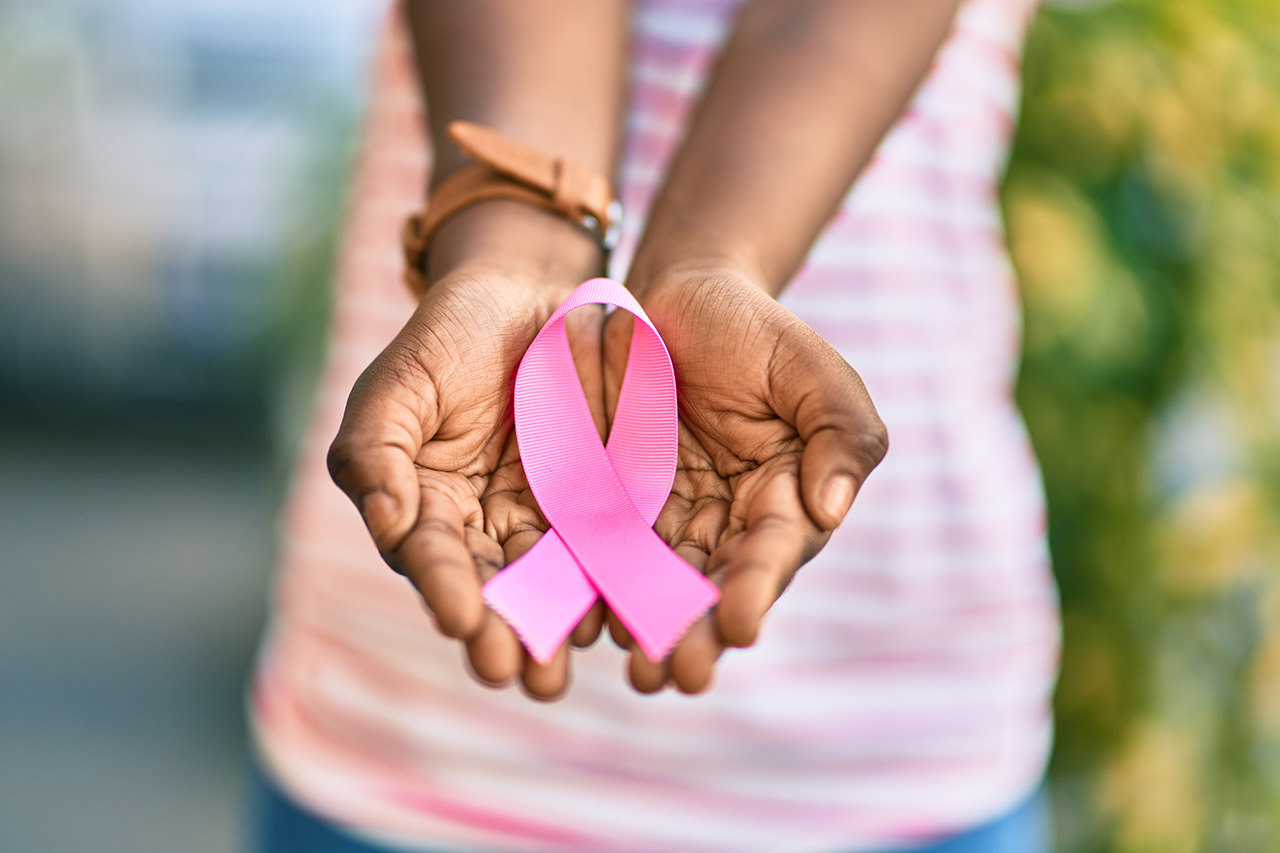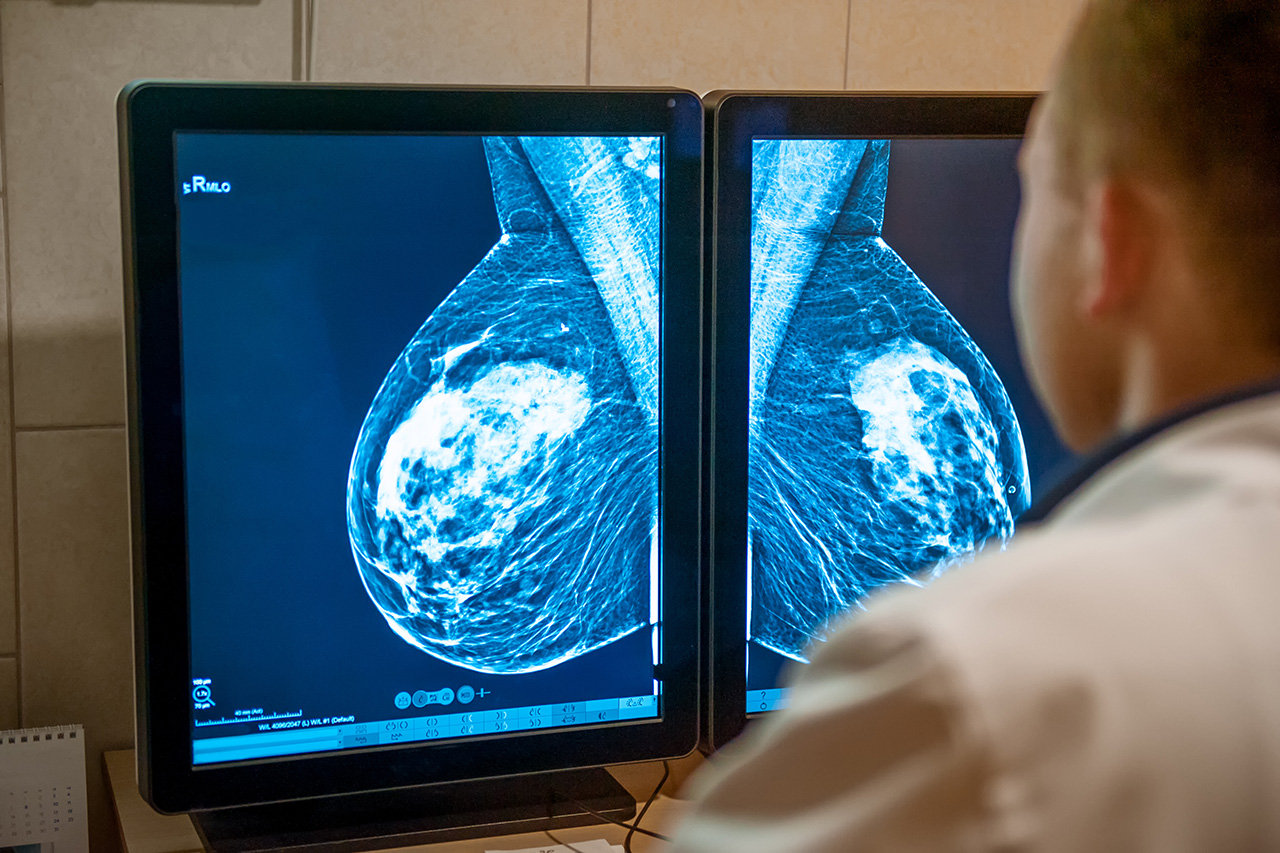In this two-part series, we look at breast cancer facts and fallacies.

Understanding Breast Cancer
What, exactly, is cancer? The medical profession uses the term “cancer” to describe a class of diseases in which abnormal cells grow and take over healthy cells in the body. The Merriam/Webster Dictionary defines cancer as: a malignant [life-threatening] tumor of potentially unlimited growth that expands locally by invasion and systemically by metastasis. Breast cancer begins in the cells of the breast tissues that can invade other tissues and spread to other areas of the body.
One in eight women will be diagnosed with breast cancer in her lifetime.
— National Breast Cancer Foundation

What causes Breast Cancer?
Unfortunately, there is no definitive answer to that question. Medical science can describe risks for developing breast cancer, but what causes healthy cells to form malignant cells is not clear.
How it begins
Cells are the basic building blocks that our bodies use to form tissues, such as in the breast. Our bodies are always replacing worn-out cells with new ones on a rotational basis as older cells die. Occasionally, the process of cell growth takes an unusual path. Instead of casting off old or damaged cells, a buildup of these used cells occurs, forming a mass of tissue that becomes a tumor.
When a malignant tumor develops in the breast, it is important to mitigate the issue right away, as cancerous cells can break away from the original tumor and spread to other places in the body. This is called metastasis. By entering the blood vessels or lymph vessels, these branches allow the cancer to travel to other parts of the body, where they begin to damage other organs and tissues.
And research has shown that different forms of past trauma can cause emotional and physical reactions that can have long-term effects, like increasing the possibility of obesity, diabetes, cancer, heart attack and stroke.
— Victoria Uwumarogie, Essence, 30 Sep. 2022
It is devastating to be told that you have cancer but that your doctor doesn’t know why. Unfortunately, most women will never be able to know an exact cause for their breast cancer. All we really know is that breast cancer is always caused by damage to the cell’s DNA.

Known Risk Factors
While there are known risk factors for developing breast cancer, you only have control over a few. Some can be avoided (such as drinking alcohol), but most (such as a family history of breast cancer) can’t be avoided. However, the presence of risk factors does not mean that if you have them you will definitely get cancer. We don’t know why some women get breast cancer and others don’t even though their risk factors may be the same.
Things That Don’t Cause Breast Cancer
Although we don’t know why breast cancer affects some women and not others, you can rest assured that if you have breast cancer, it was NOT caused by the following:
- Cell phones
- Deodorant
- Microwaves
- Caffeine
- Exposure to someone who has cancer

Some Basic Facts About Breast Cancer[1]
- In 2022, an estimated 287,500 new cases of invasive breast cancer will be diagnosed in women in the U.S. as well as 51,400 new cases of non-invasive (in situ) breast cancer.
- 65% of breast cancer cases are diagnosed at a localized stage (there is no sign that the cancer has spread outside of the breast), for which the 5-year relative survival rate is 99%.
- This year, an estimated 43,550 women will die from breast cancer in the U.S.
- Although rare, men get breast cancer too. In 2022, an estimated 2,710 men will be diagnosed with breast cancer in the U.S. and approximately 530 men will die from breast cancer.
- 1 in 8 women in the United States will be diagnosed with breast cancer in her lifetime
- Breast cancer is the most common cancer in American women, except for skin cancers. It is estimated that in 2022, approximately 30% of all new women cancer diagnoses will be breast cancer.
- There are over 3.8 million breast cancer survivors in the United States.
- On average, every 2 minutes a woman is diagnosed with breast cancer in the United States.
NEXT TIME:
In the next article, we’ll be talking about Detection, Diagnosis, and Treatment. Stay tuned!

